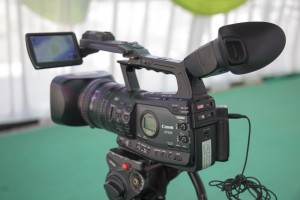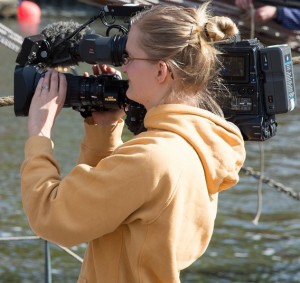“The style, technique and methods used in film and TV are so familiar to us, we process them comfortably. To some degree, we now expect these elements to appear in the novels we read – if not consciously, then subconsciously.” —C. S. Lakin
I read, “Writing a Novel? 6 Visual Storytelling Techniques to Borrow From Film and TV” by C. S. Lakin on The Write Life blog.
Among other things, Lakin’s suggestions showed me how to stop inserting senses into a scene, and making them part of the experience.
I invite you to read Lakin’s blog. Here’s what I did from Lakin’s suggestions.
1. I broke my ho-hum scene into segments like a movie director does. Each segment represented a key moment:
- opening “shot,”
- moments when something important happened,
- and the high moment before the end.
2. Then for each segment, I imagined where my camera needed to be:
- where my character physically is as she sees and reacts to what’s happening,
- zooming in close for details and zooming out for a wider perspective.
Example: My hero and heroine sit in a Christmas Eve midnight service.
In my heroine’s point of view, I zoomed out and saw two pastors bring flames from the altar to the congregation. They start the chain in which people in the pews pass the flame to their neighbors’ candles.
Then I zoomed my lens in on the hero beside her. He whispers in her ear something she doesn’t expect. I zoomed in closer as she studies his profile and has an epiphany about him.
3. Next I considered background noise, instead of trying to think of sounds I could insert.
In my example scene, the only sounds in the draft version were the hero’s whispering in the heroine’s ear and the congregation singing “Silent Night.” I sat in the pew with her in the opening segment and listened. Ah. Soft organ music played.
In another segment, I heard a man’s cough farther back in the sanctuary. And when the candles glow in the dark before “Silent Night” is sung, I noticed the silence.
In a segment when the hero and heroine walk home, I heard the hum of a car passing.
4. Next, I colored my scene. Not inserting colors so much as seeing them in my segments.
In one segment, considering what some colors imply, I sat in the pew and saw the red carpet on the stairs the pastors climb to the altar to light candles. In a zoom, I saw the white candle in the heroine’s hand.
5. Finally, I looked for textures of weather or atmosphere.
While inside the church, I remembered from past Christmas Eve services how I loved when the lights were dimmed and only the glowing candles emitted a warm and meaningful light.
On their walk home, it’s snowing. I saw the snow gathering on the hero’s hair and eyelashes. I felt snowflakes cold on the heroine’s face, making her lower her head against them.
The items I added to the scene were those I visualized through my camera. They weren’t the plot or action, but they brought what surrounds the action alive.
Get out your camera and see what needs to be added to your scene. Click to tweet.
What might your camera see in the scene you’re working on as you zoom in and out?






 RSS - Posts
RSS - Posts



Does your camera have to be held by your POV character?
I wanted your camera to zoom in on your couple.
He whispered something to her. Did his head touch hers when he whispered? Did he move her hair away from her ear before communicating?
What was her expression, her reaction, when when she had the epiphany? Did her eyes sparkle–did she squeeze his arm.?
I enjoyed your post Zoe. I’ve been looking at the many photos I took over the last week. The ones I enjoy the most are the candid shots. My grandson holding his chopsticks over my daughter’s head. His smile is so big you can hardly see his eyes. My daughter’s mouth forms an “O.” The chopsticks she holds are about to pinch the grandkid.
Hi, Marcia. A video camera captures what can be seen and heard. Unless you’re writing in the omniscient POV, I think you’d write only what the POV character can see and hear from her camera, BUT she would also know her emotions, other senses, and her actions. So all those things like heads touching and hair away from the ear could and should be included. And reactions to stimuli are important. In her POV, she can’t see her face, but she can frown as an action or feel her cheeks burn or her feel cheeks stretch into a smile. She can feel what’s going on inside her also. She wouldn’t know if her eyes sparkled, but he could mention that in dialogue.
I think this camera exercise is to help us see and hear things and actions from the POV character’s eyes and ears. For example, she could squeeze his arm because she knows she did that, but her camera lens could also shift and zoom in to look at her squeezing his arm if that’s important to the scene. But it might be better to zoom in on his face to see his reaction as she squeezes his arm.
I hope this makes sense, Marcia.